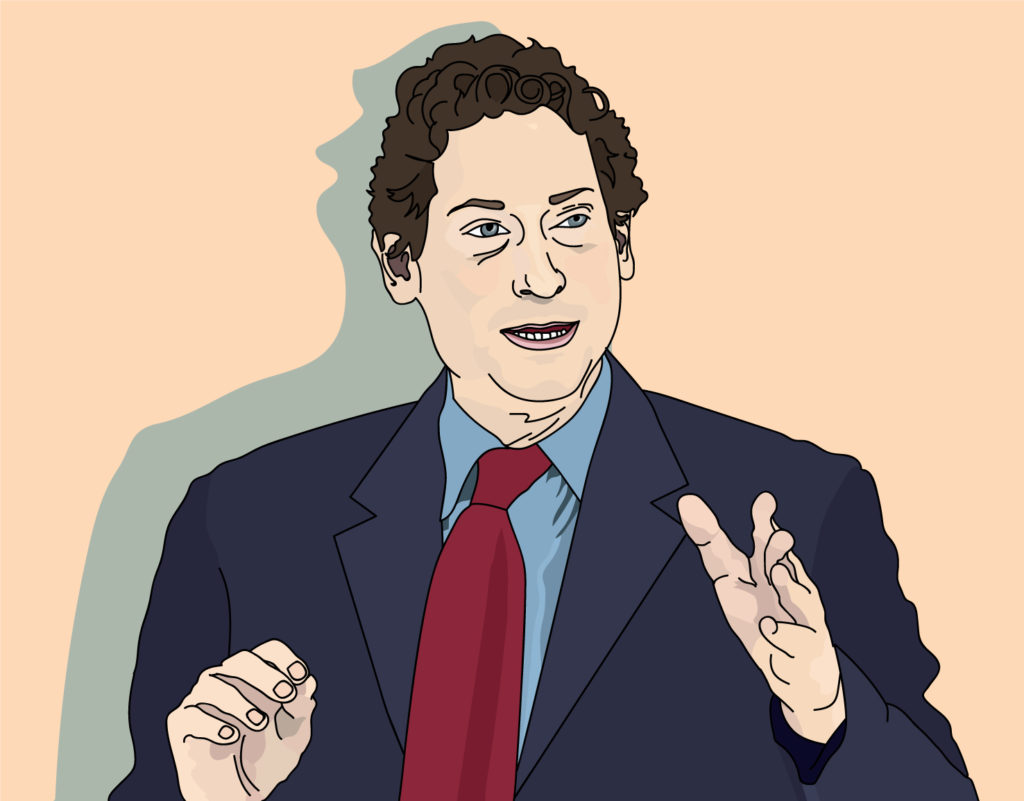Three questions for the director of the Center for the Study of Hate and Extremism
With an increase in hate crimes comes an increase in hate crime media coverage. Just this week alone, we heard about how the white suspect in the three black church fires in Louisiana was charged with hate crimes; a white Oregon man was sentenced to life in prison for a hate crime murder of a black man; and Dallas police are investigating an assault against a transgender woman as a potential hate crime. To figure out how we might better understand hate crime trends and how journalists should cover them, Crosstown’s Joshua Chang sat down with Prof. Brian Levin, the director of the Center for the Study of Hate and Extremism at the California State University, San Bernardino.

Illustration by Racquel Fygenson
Crosstown: For trends in hate crimes, what time frame should we consider? Month to month, year to year?
Brian Levin: First of all, our center publishes yearly and half-yearly reports. Police departments usually finalize their reports near the end of the year so we usually have a more accurate dataset to work with then.
Hate crime has been on the rise in Los Angeles ever since 2014 and 2017 had the highest count of hate crimes both nationally and for Los Angeles. We’re still waiting [to publish] for a special report for 2018 until all the data is in, but we already saw a sharp rise in violent hate crimes in the first half of last year.
Journalists shouldn’t be looking at weekly or monthly data to somehow find a trend from it. That being said, if there are any alarming trends specific to certain communities, you should report on them as soon as possible.
For example, even though homophobic crimes have been decreasing steadily in Los Angeles and nationwide throughout the years, gay males were still the single most targeted group in Los Angeles since 2016.
The focus should be on the details: how violent the crimes were, where and how often do these crimes take place, and so on.
CT: What are the main problems you see in how hate crimes are reported in the media?
BL: What you don’t want to do is rush to judgments. Hate crime is harder to quantify than other crimes like homicide or robbery; it is a little nuanced. We would all love to point at Donald Trump for every single spike in numbers [of hate crimes], but the reality is more complicated than that.
I see a lot of “experts” who really have no idea what they are talking about because they don’t know how to analyze data. They react to every single thing they see. Again, spikes happen regularly and nationally. The rise in hate crimes is a global phenomenon, not just a national one.
Of course, you really should know about the state you are reporting on. Los Angeles is unique: it is country’s the second largest city and certainly one of the most diverse. So it is a good thing that its police are tracking and making the hate crime data available.
Also, hate crimes in big cities and metropolitan areas are different from those in rural areas. In the special reports, I analyze the rise of hate crimes in the five biggest cities in the U.S. This is because they are also the most diverse areas in the country.
So first and foremost, you really should know your data and have constant access to it. You really should know the police department and understand how they work.
CT: Speaking of the police, what has been your experience working with the LAPD for acquiring data and information?
BL: First of all, I do want to give credit for what the LAPD is doing. Now, they are certainly not perfect, but hate crime really hadn’t been getting the attention it is receiving now. The hate crime unit is undermanned and underfunded compared to other units.
We should recognize not many cities have a hate crime-specific division in their police departments. Those in smaller cities would just have a liaison officer dealing with all hate crimes.
Big police departments like the LAPD don’t have the luxury not to stay on top of their game. They have been tracking hate crimes since the 1980s. That being said, the LAPD was different 25 years ago. Now, they are becoming more and more responsive to inquiries and approaches to the public. Its members, particularly the leadership, has also become more diverse.
So in general, the LAPD is doing good but could do a whole lot better.






